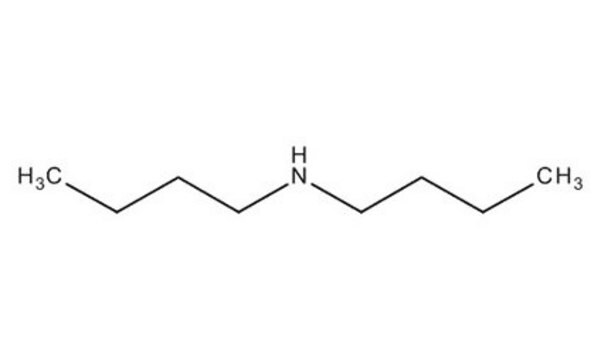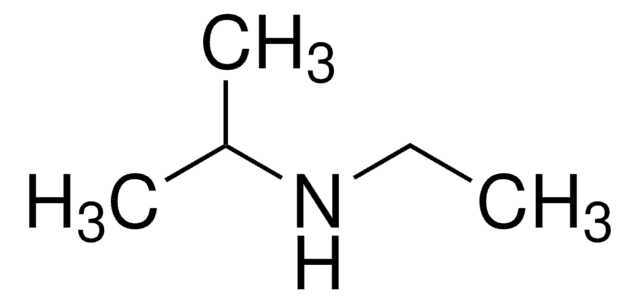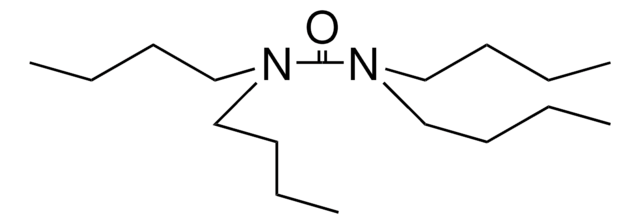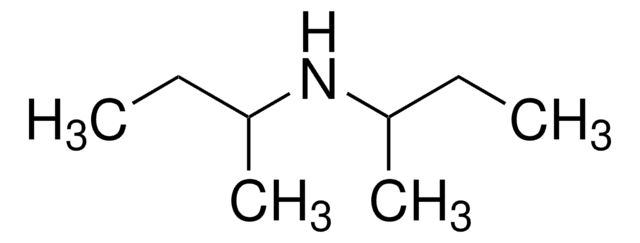471232
Dibutylamine
≥99.5%
Sinônimo(s):
N,N-Di-n-butylamine, N-Butyl-1-butanamine, n-Dibutylamine, Di-n-butylamine
About This Item
Produtos recomendados
densidade de vapor
4.46 (vs air)
Nível de qualidade
pressão de vapor
1.9 mmHg ( 20 °C)
Ensaio
≥99.5%
forma
liquid
temperatura de autoignição
594 °F
Lim. expl.
10 %
índice de refração
n20/D 1.417 (lit.)
pH
11.1 (20 °C, 1 g/L)
pb
159 °C (lit.)
pf
−62 °C (lit.)
solubilidade
water: soluble 3.8 g/L at 20 °C
densidade
0.767 g/mL at 25 °C (lit.)
grupo funcional
amine
cadeia de caracteres SMILES
CCCCNCCCC
InChI
1S/C8H19N/c1-3-5-7-9-8-6-4-2/h9H,3-8H2,1-2H3
chave InChI
JQVDAXLFBXTEQA-UHFFFAOYSA-N
Procurando produtos similares? Visita Guia de comparação de produtos
Descrição geral
Aplicação
- N, N
- -Dibutyl-4-methylaniline by Pd-catalyzed Buchwald-Hartwig amination reaction with aryl chlorides and bromides.
- N,N-Dibutylacetamide by acetylation reaction with isopropenyl acetate.
It can also be used as:
- A strong hindered base in the different elimination reactions.
- An organocatalyst to synthesize annulated pyrano[2,3-d]pyrimidine derivatives via multicomponent condensation reaction of aromatic aldehydes, malononitrile, and barbituric acid.
Palavra indicadora
Danger
Frases de perigo
Declarações de precaução
Classificações de perigo
Acute Tox. 2 Inhalation - Acute Tox. 3 Dermal - Acute Tox. 4 Oral - Eye Dam. 1 - Flam. Liq. 3 - Skin Corr. 1A
Código de classe de armazenamento
3 - Flammable liquids
Classe de risco de água (WGK)
WGK 1
Ponto de fulgor (°F)
104.9 °F - closed cup
Ponto de fulgor (°C)
40.5 °C - closed cup
Equipamento de proteção individual
Eyeshields, Faceshields, Gloves, type ABEK (EN14387) respirator filter
Escolha uma das versões mais recentes:
Já possui este produto?
Encontre a documentação dos produtos que você adquiriu recentemente na biblioteca de documentos.
Os clientes também visualizaram
Nossa equipe de cientistas tem experiência em todas as áreas de pesquisa, incluindo Life Sciences, ciência de materiais, síntese química, cromatografia, química analítica e muitas outras.
Entre em contato com a assistência técnica















